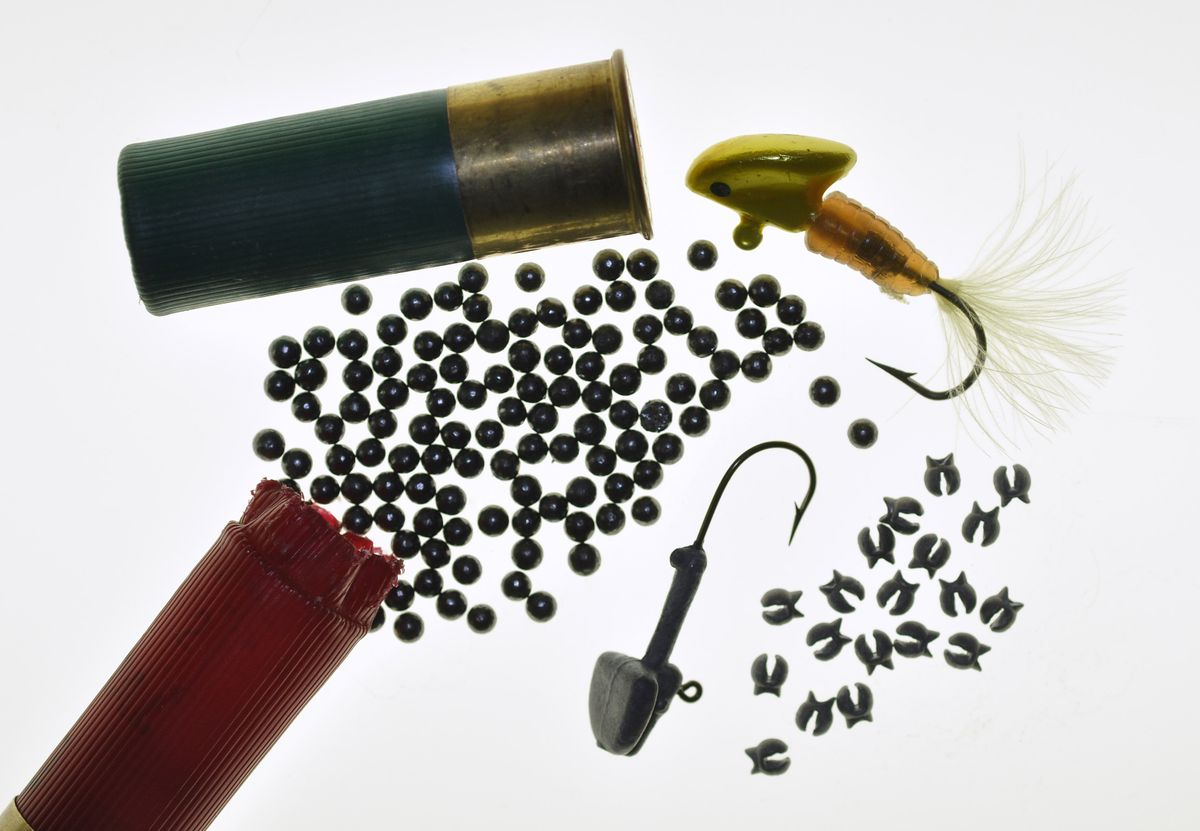Restrictions aim to reduce toxic impacts of hunting, fishing

Anglers have a sinking feeling about rising concerns over lead poisoning.
Hunters are recoiling, too.
Washington appears to be following a trend toward restricting the use of lead in sinkers for fishing as well as in hunting ammunition primarily to prevent lead poisoning in a range of species such as loons, swans and eagles.
While researchers are warning hunters about the effects of ingesting spent lead shot or bullet fragments, health officials also suggest that anglers wash their hands after handling lead sinkers using pliers – not their teeth – to close split shot.
Lead poisoning can cause a wide range of health and developmental problems, especially in children or fetuses.
In wildlife, a little lead exposure often results in death.
Starting this fall, the state’s lead-shot restrictions will expand, requiring hunters to use non-toxic shot when hunting upland game birds or mourning doves in three units of the Sunnyside-Snake River Wildlife Area.
In 2011, the non-toxic shot requirement will be expanded to all established WDFW pheasant-release sites.
Hunter skepticism forced the WDFW to scale back its original timetable for lead-shot restrictions for upland bird hunting.
“I strongly disagree with the proposed Non-toxic Shot Requirements in the proposed 2009-2011 Hunting Season regulations,” said Milton Brokaw of Auburn in a comment letter to the agency this winter. After reading the background agency officials had compiled on lead exposure, he said he found “nothing … that would lead me to conclude that there is any compelling reason to prohibit the use of lead shot in the hunting of upland game, except where the specific hunting area is co-located with a significant waterfowl area.”
He said the agency showed no research to indicate that lead shot widely spread over Eastern Washington hunting areas was a threat to wildlife or the environment.
Meantime, 26 states and provinces have enacted non-toxic shot regulations for hunting doves, pheasants and other species.
“Some research in Minnesota and especially two studies on chukars really opened my eyes about the issue,” said Mick Cope, Washington’s upland bird and small game manager.
“Chukars, I thought, would be about the last thing impacted from lead shot. Their habitat is so remote. But studies in Oregon and found that up to 10 percent of the chukars bagged by hunters had lead shot in their gizzards — ingested before they were killed.”
Further study revealed that the grit in their gizzards averaged roughly the size of No. 6 shot. In other words, chukars were searching out the spent lead pellets from the most popular chukar hunting load.
“Things like that make you realize that there’s still a lot to learn,” Cope said.
The Washington Department of Ecology is working on a lead chemical action plan, which would require working with the WDFW to reduce the use of lead-containing products where “safer alternatives” are available.
Copper, tungsten composites, bismuth and steel all have proved viable albeit more costly substitutes for lead in sporting applications. Legislation may not be far in the future.
Lead shot was phased out of waterfowl hunting nationwide from 1986-1991 after studies showed that thousands of waterfowl were dying after ingesting spent shot while feeding in the nation’s heavily hunted marshes.
Bald eagles, which prey on wounded ducks, also were hard hit by lead poisoning.
Studies show dramatic reductions in waterfowl deaths from lead poisoning since 1991. However, the threat from previous use of lead shot persists.
In the winter of 2001-2002, about 247 swans, mostly trumpeters, died of lead poisoning in Skagit and Whatcom Counties and adjacent portions of British Columbia, according to a Washington Department of Fish and Wildlife study.
A University of Washington winter program to haze the swans away from Judson Lake in Whatcom County has reduced the deaths by about half.
Protecting endangered trumpeter swans prompted Yellowstone National Park to be a leader in banning lead sinkers for fishing in 1994.
Loon advocates have succeeded in restricting use of small lead sinkers in at least six states. One ingested split-shot sinker is enough to kill a loon.
However, no rules have been enacted at the 12-15 lakes loons frequent in Washington even though two researchers have documented that up to 38 percent of the known mortalities among common loons in this state involve lead poisoning.
“Last year we lost the male of a nesting pair at Bonaparte Lake because of lead poisoning,” said Ginger Gumm, who has compiled the bulk of the state’s loon research along with her partner, Dan Poleschook Jr. “The female at South Twin Lake got lead poisoning from a sinker. She crushed the egg in her nest and died. So we lost two there. Then her 3-year-old chick tied from lead ingestion and line entanglement.”
When a fish breaks an angler’s line, a lead jig or sinker and perhaps some line often remains with the fish.
“These fish will be slower than other fish, and they’re the ones loons will target,” Gumm said.
Another study found that at least 10 percent of eagle deaths are caused by ingestion of lead from either carcasses or from birds that have embedded pellets, said Dinah Demers, former wildlife biologist for the Colville Confederated Tribes.
Demers was the reservation’s senior biologist when the Colvilles banned lead shot for upland bird hunting in 2007. Hunters complained about the cost and availability of non-toxic shot, and the ban was lifted in 2008.
“Sportsmen have done so much for wildlife conservation over the years, I am optimistic that moving away from lead shot will be accepted by the majority – it just seems to be the right thing to do,” Demers said.